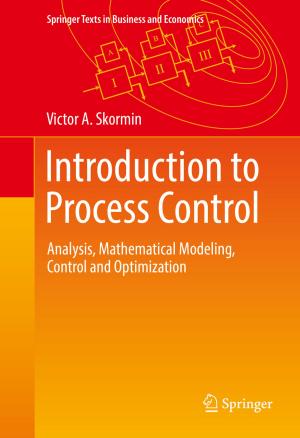The Mathematics of Bookselling
A Monograph
Business & Finance, Marketing & Sales, Retailing, Industries & Professions, Industries| Author: | Leonard Shatzkin | ISBN: | 9780985245801 |
| Publisher: | The Idea Logical Press | Publication: | November 28, 2012 |
| Imprint: | The Idea Logical Press | Language: | English |
| Author: | Leonard Shatzkin |
| ISBN: | 9780985245801 |
| Publisher: | The Idea Logical Press |
| Publication: | November 28, 2012 |
| Imprint: | The Idea Logical Press |
| Language: | English |
The Mathematics of Bookselling is a definitive resource for book retailers looking to maximize margins and profits through the proven pricing and inventory management practices developed by Leonard Shatzkin, one of 20th century book publishing’s most innovative executives. Because bookselling involves dealing with so many different products from so many different suppliers with so many different prices and margins, it is perhaps the most complex retailing challenge there is. The Mathematics of Bookselling, a monograph by Leonard Shatzkin, explores a variety of the real-life challenges booksellers face -- what and when to buy, how margin (the amount made on a sale) and turn (the speed at which inventory brought in gets sold) affect profitability, whether to add or subtract titles from the mix -- and lays out the logic and calculations by which the "right" answers can be found. Leonard Shatzkin was perhaps the most far-sighted and groundbreaking executive in American trade publishing after World War II, working for Viking, Doubleday, Macmillan, and McGraw-Hill. He showed publishers the benefits of more extensive sales coverage when he more than doubled the size of Doubleday's field force in the 1950s. He pioneered vendor-managed inventory in the book business during the same time period. But, most important, he was the first publishing executive to concern himself with the intricacies of bookstore profitability. He came to the conclusion that there was much more leverage for both publisher and store in picking the right books at the right time than in increasing store discounts (which is, ultimately, a zero-sum game). And he had the rather unconventional view that returns were a good thing for both publisher and retailer, although he makes it clear in The Mathematics of Bookselling that intelligent inventory management minimizes them and uses them as a tool, not a crutch or a substitute for poor buying.
The Mathematics of Bookselling is a definitive resource for book retailers looking to maximize margins and profits through the proven pricing and inventory management practices developed by Leonard Shatzkin, one of 20th century book publishing’s most innovative executives. Because bookselling involves dealing with so many different products from so many different suppliers with so many different prices and margins, it is perhaps the most complex retailing challenge there is. The Mathematics of Bookselling, a monograph by Leonard Shatzkin, explores a variety of the real-life challenges booksellers face -- what and when to buy, how margin (the amount made on a sale) and turn (the speed at which inventory brought in gets sold) affect profitability, whether to add or subtract titles from the mix -- and lays out the logic and calculations by which the "right" answers can be found. Leonard Shatzkin was perhaps the most far-sighted and groundbreaking executive in American trade publishing after World War II, working for Viking, Doubleday, Macmillan, and McGraw-Hill. He showed publishers the benefits of more extensive sales coverage when he more than doubled the size of Doubleday's field force in the 1950s. He pioneered vendor-managed inventory in the book business during the same time period. But, most important, he was the first publishing executive to concern himself with the intricacies of bookstore profitability. He came to the conclusion that there was much more leverage for both publisher and store in picking the right books at the right time than in increasing store discounts (which is, ultimately, a zero-sum game). And he had the rather unconventional view that returns were a good thing for both publisher and retailer, although he makes it clear in The Mathematics of Bookselling that intelligent inventory management minimizes them and uses them as a tool, not a crutch or a substitute for poor buying.















